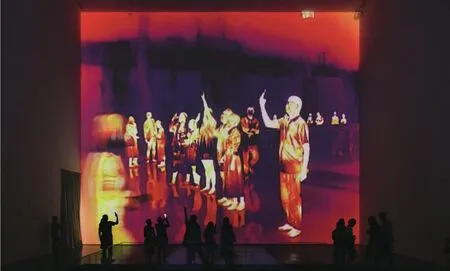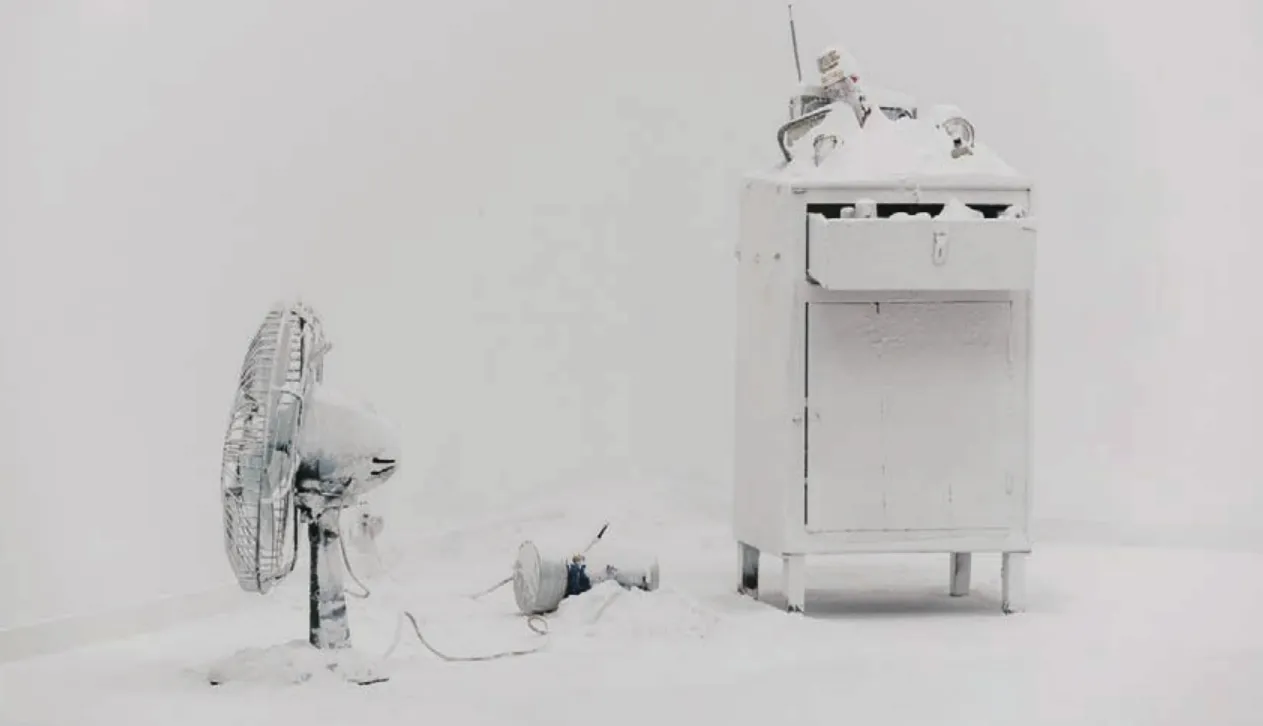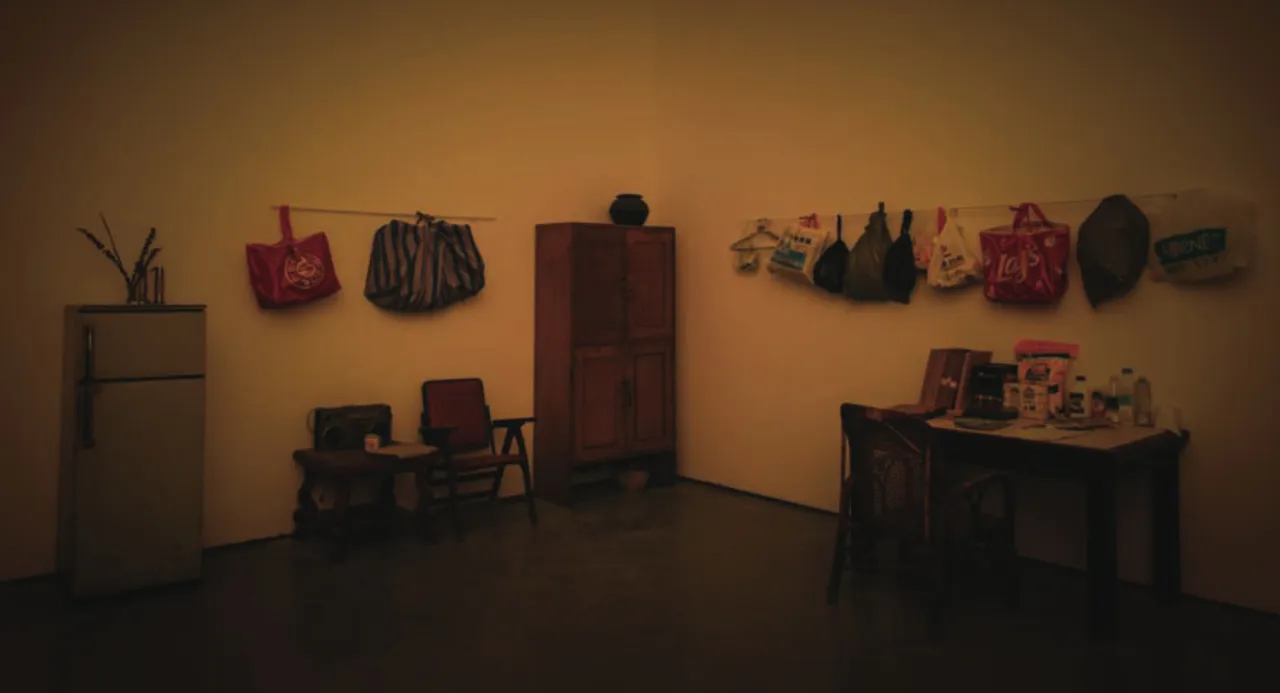FORMLESS HEALING
2020-12-06

“The Advent,” pool,video, water machine,tablet, 2020

Like Shadow,” thermal induction device,projector, 2020
The coronavirus is running rampant. People, panicked, stay indoors and in a constant state of anxiety. Within this “formless theatre” that human society is trapped in, artist Fan Bo’s immersive new exhibition at Today Art Museum in Beijing offers unique therapy by awakening the audience’s experimental world.
As Fan’s largest solo exhibition in recent years, “Fan Bo: The Formless Theater,”is a milestone for the Tianjin-born artist who has become noted for exploring the systems of human perception. It consists of four closely connected works, which begin by recreating the immediate drama of the Covid-19 pandemic, before more broadly exploring how senses such as sight, touch, and hearing can be transformed, and imagination and cognitive ability can be made boundless.
The two works in the main hall,“The Advent” and “Like Shadow,”set up the social background of this exhibition. “Like Shadow” is a floor-to-ceiling thermal screen that captures the silhouettes and body temperatures of visitors who walk by, an exaggerated version of the same structure found in almost every public building in China. In this way,everyone who enters the exhibition hall is an actor on the artist’s stage.Their images, rendered different from ordinary cognition by the prism of diseases and fright, convey the“exceptional state” in which people live under the pandemic.
If visitors who walk into the exhibition hall are actors, then “The Advent” is the director. A humanoid figure is projected from the ceiling into a pool of water in the center of the main hall, and “conducts” this solemn procession of people who gather together in different corners of the world to participate in this show.
Walking out of the diffused and implicit “theater of physical senses”in the main hall, visitors enter a field where perception systems overlap and connect. “There Will Always Be a Black-Mat Boat Creaking and Squeaking,” based on a visually impaired girl’s poem about walking in a small southern Chinese town,combines Braille writing and a video of the girl’s monologue to recreate her world for visitors through voice and touch. This is an extension of Fan’s many recent artistic experiments on the cognitive systems of blind and sighted people, which often use a combination of Braille and images,such as his “Pathological Section” and“World 3” collection in 2016, and“The Fable” in 2017.
The final work of the exhibition,“Emmanuel,” is presented in part in a bright room that shows everyday household items covered with boxes of pills and medicinal powder, bringing healing and therefore hope to these scenes. A dark room, which forms the other part of the installation, replicates the environment of the visually impaired, with visitors relying on touch and hearing to experience the setting.The isolation caused by the coronavirus, and the perceptual obstacles caused by visual impairment, both realistically portray how the human body is trapped in the present; while the medicines of“Emmanuel” and the conductor of“The Advent” bring physical as well as spiritual healing. As Zhang Ran,the director of Today Art Museum,explains of her ideas of art’s role in the context of coronavirus: “No matter how long the pandemic lasts, or how many scars it leaves,it will pass. When we face life and death, suffering, the unknown, and confusion, art may provide paths for re flection and philosophical thinking on the overall state of human existence.” – H.Y.

“Emmanuel,” furniture,household items, powder, 2020

“Emmanuel,” furniture,household items, powder, 2020
